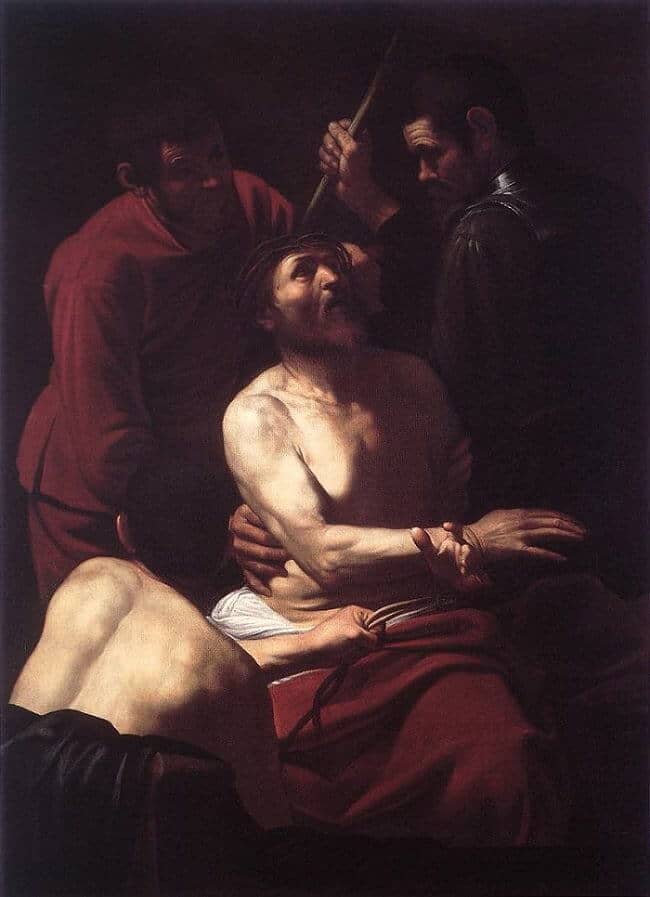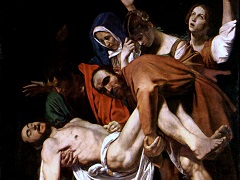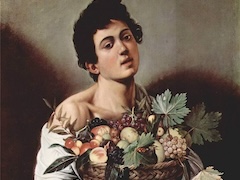Crowning with Thorns, 1603 by Caravaggio

The recent cleaning of this picture, formerly in the Cecconi collection, has revealed it as an undoubted masterpiece of Caravaggio's mature Roman phase, dating from about
the same time as the National Gallery Supper at Emmaus which it resembles, above all, in its lighting. The picture is distinguished by the skillful manner in which Caravaggio
adapted an archaic composition to his own purposes and thereby successfully challenged both the archaeological classicism of the young Rubens, working in Italy from 1600 to
1608, and the evolved intellectualism of the aged Titian. There can, as Mina Gregori has shown, be little doubt that Caravaggio's Christ was influenced by the figure of
Christ in Rubens's altarpiece of the Crowning with Thorns, completed by April 1602 for the Church of Santa Croce in Gerusalemme, Rome, and that Rubens's figure was, in turn,
derived from the famous classical statue of The Belvedere Torso. It also seems probable that the pose of Caravaggio's soldier in armour, holding his staff in a somewhat
artificial manner which symbolizes rather than facilitates his role as tormenter, owed something to Titian's famous depiction (Paris, Musee du Louvre) of the subject,
which Caravaggio could have seen in his youth in the Church of Santa Maria delle Grazie, Milan. But Caravaggio's response to both pictures was competitive rather than
deferential, and he clearly attempted to eliminate their conspicuous clutter by reverting to the compact, symmetrical kind of fifteenth-century composition employed,
for example, by Hieronymous Bosch in Christ Mocked (London, National Gallery).
The effect, altogether brilliant, is of a classicism which discerns an order in situations but does not impose one on them and makes ample use of significant rather
than 'appropriate' gestures to lend both visual and psychological cohesion to the image. There is a downward spiral of very precise actions: pulling Christ's hair, a motif
actually adopted from the related Subject of the mucking of Christ by the Jews; Squeezing his body; tightening- the rope around his wrists.
















